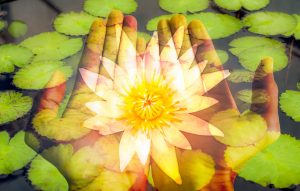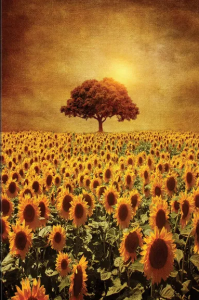 The Yogabliss, Your Heart Life on-line Moving into Meditation classes met this morning. We practiced bringing loving attention to mindfulness practice. This looks like bringing awareness to the full expression of being. We offer stillness, time and space in which to “tenderly be with” our ten thousand joys and ten thousand sorrows. In compassionate practice we find life’s surprise.
The Yogabliss, Your Heart Life on-line Moving into Meditation classes met this morning. We practiced bringing loving attention to mindfulness practice. This looks like bringing awareness to the full expression of being. We offer stillness, time and space in which to “tenderly be with” our ten thousand joys and ten thousand sorrows. In compassionate practice we find life’s surprise.
We heard David Whyte’s poem, Imagine My Surprise.
We drew inspiration from meditation teacher and writer Larry Yang’s book, Awakening Together: The Spiritual Practice of Inclusivity and Community.
I invite you to settler yourself in stillness. Once you feel centered you can move your awareness, feeling sensation in your hips, thighs, legs and feet. Sense around the pelvis: front, back and sides; around your low back and belly. Explore the mid back, circumference of your rib cage; upper back, shoulders, arms and hands. Sense your neck and how your head is balanced in space. Explore the circumference of your head and the soft tissues of your face. Sense eyes, ears, nose and tongue. What is true for you right now?
Is it possible for you to bring a sense of “heartfulness” to your experience? You might imagine the presence of other friends in our circle. Me becomes We. We can reflect on what draws us to practice together: how we lend our support and also receive support. How does our presence affirm what we value?
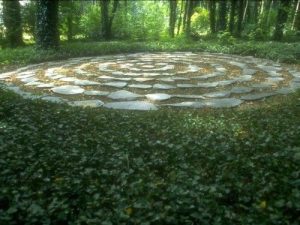 Entering silence can reveal our true nature. Mindfulness offers a way to see more clearly. Time teaches how bodies, hearts and minds are in process, like a river coursing in response to changing conditions. Mindfulness can reveal the full range of our lives. Can we be present for peace and turmoil? In the trance of busyness it’s easy to take this body, this breath for granted. How is it to be truly present with your life?
Entering silence can reveal our true nature. Mindfulness offers a way to see more clearly. Time teaches how bodies, hearts and minds are in process, like a river coursing in response to changing conditions. Mindfulness can reveal the full range of our lives. Can we be present for peace and turmoil? In the trance of busyness it’s easy to take this body, this breath for granted. How is it to be truly present with your life?
Today, you can awaken from trance. You can come back to this precious breath, this body, heart and mind. Nothing is left out. If an emotion surfaces, see if you can let it be. Perhaps you name it or acknowledge it: “Ah, this too.” You might be feeling anxious or calm. Ah, this too. Is it possible to infuse this acknowledgment with kind awareness?. The river of being is ever changing. The inner and outer climate is ever changing. Kind awareness may be present on the journey.
 If you find yourself contracting or tensing around an experience, you might widen your awareness by creating more space around it. You can bring awareness out to the rest of your body, the feeling of sitting, sensations in the arms or legs or the sounds around you. You might inquire: How can I meet this with kind awareness and tenderness?
If you find yourself contracting or tensing around an experience, you might widen your awareness by creating more space around it. You can bring awareness out to the rest of your body, the feeling of sitting, sensations in the arms or legs or the sounds around you. You might inquire: How can I meet this with kind awareness and tenderness?
What is it like to be in relationship with life in all its expressions? “How am I with this?” Can you view this experience like a territory revealing itself? You might step back a bit or move in. You can study the landscape of emotion and observe how it changes. You can cultivate intimacy with your inner and outer experience. What is it like to bring loving awareness to the world around you?
Our friends can help remind us to come back to what we hold most dear. We can support one another in Sati, the Pali word for mindfulness. It is sometimes translated as the ability to remember. The ground of compassion, this kind awareness, begins with ourselves. This is how we learn to extend that same kindness to others. In our daily lives we can remember – when feelings arise – we can step back – feel our breathing. Inquire: What am I feeling? How am I with this? We can feel our bodies. Create space around our experience. We can also relate intimately with life. Let’s reflect on David Whyte’s poem, Imagine My Surprise:
Imagine my surprise
sitting a full hour
in silent and
irremediable
fear for the world,
to find the body
forgetting
its own fear,
 the instant
the instant
it opened
and placed
its unassuming
hands
on life’s enduring
pain.
And the world
for one moment
closed
its terrifying eyes
in gratitude.
Saying:
“This is my body, I am found.”
Slowly enter stillness. You might allow a sense of kind awareness to be in the background of your experience. What is it like to be still and aware? When we meditate we are invited to sit with the full range of human experience. The Taoists described this as the ten thousand joys and the ten thousand sorrows. Joy turns to sorrow. Sorrow turns to joy. Sometimes we get lost in one or the other. Our conditioning takes over in grasping pleasant or avoiding unpleasant. And yet so much life is lived in between. This is what the mind does, we become spellbound. We come to live what we think life should be. Our awareness practice can help to break the spell. When we enter the stream we have direct experience. We are so much more than who we think we are . Life is so much more than what we think.
How do we enter the stream of life? Meditation instructor and author Larry Yang writes:
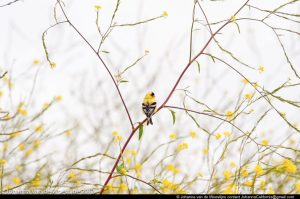 . . . as you allow your awareness to touch your experience without pushing it away, without wanting more of it – that touch is kindness itself. . . . This paying attention is a profound act of love. It’s a profound act of love in allowing the moment, in allowing you, in allowing me to be who we are. . . without needing to second guess or question or criticize . . . .
. . . as you allow your awareness to touch your experience without pushing it away, without wanting more of it – that touch is kindness itself. . . . This paying attention is a profound act of love. It’s a profound act of love in allowing the moment, in allowing you, in allowing me to be who we are. . . without needing to second guess or question or criticize . . . .
Right now, we can reflect on how we pay attention with love. Who, what or where do we lovingly attend? How have we been lovingly attended? These queries often take us to children or pets often the creatures who clammer for our attention. Our hearts and minds are touched by this need we all share: the need to receive and to offer our attention. Paying attention, being aware of someone else is love.
All of our ten thousands joys and sorrows deserve our attention and love. Larry asks: “Is it possible to love someone without loving all of who they are?” Perhaps we feel – rather than know – the answer to this question. We can reflect on our many experiences of tender forbearance during those difficult times in relationship – with partners, family members and friends. Do we pick and choose what is deserving of love in ourselves?
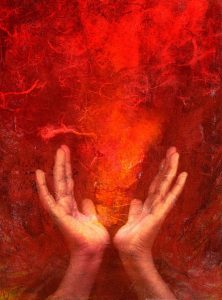 We can feel this tender forbearance as the experience of compassion. We cultivate the ability to be with our pain by allowing it to be. This “tenderly being with” is the experience in which we may learn what is really needed. We may be surprised:
We can feel this tender forbearance as the experience of compassion. We cultivate the ability to be with our pain by allowing it to be. This “tenderly being with” is the experience in which we may learn what is really needed. We may be surprised:
. . . Imagine . . . surprise . . . to find the body forgetting its own fear, the instant it opened and placed its unassuming hands on life’s enduring pain. And the world . . . saying “This is my body, I am found.”

